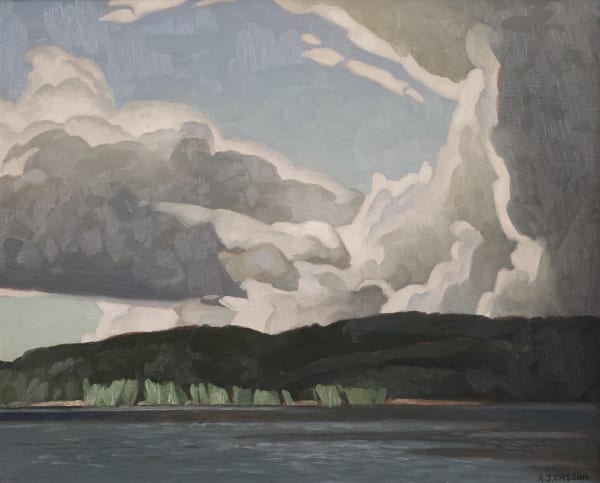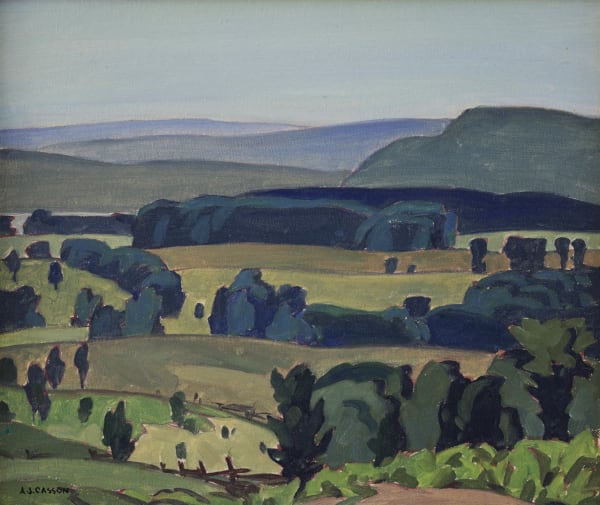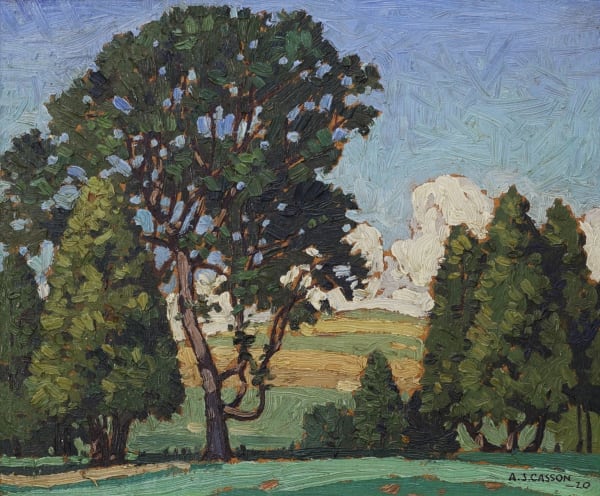"There is an appeal in Casson's work because of its detachment from the strife and ugliness of his life. He preaches no sermon, makes no social comment. He does not probe our guilty motives nor make us feel ashamed. He simply distills for us a scene of primordial beauty or monumental calm and offers it to us as a purely aesthetic experience."
Margaret Gray, Margaret Rand & Lois Steen; Casson biographers
Group of Seven painter Alfred Joseph Casson (May 17, 1898 – February 20, 1992), known affectionately as Cass, was born in Toronto, Ontario. He was raised in a Quaker household that emphasized honesty, hard work and personal integrity, values he reflected throughout his lifetime.
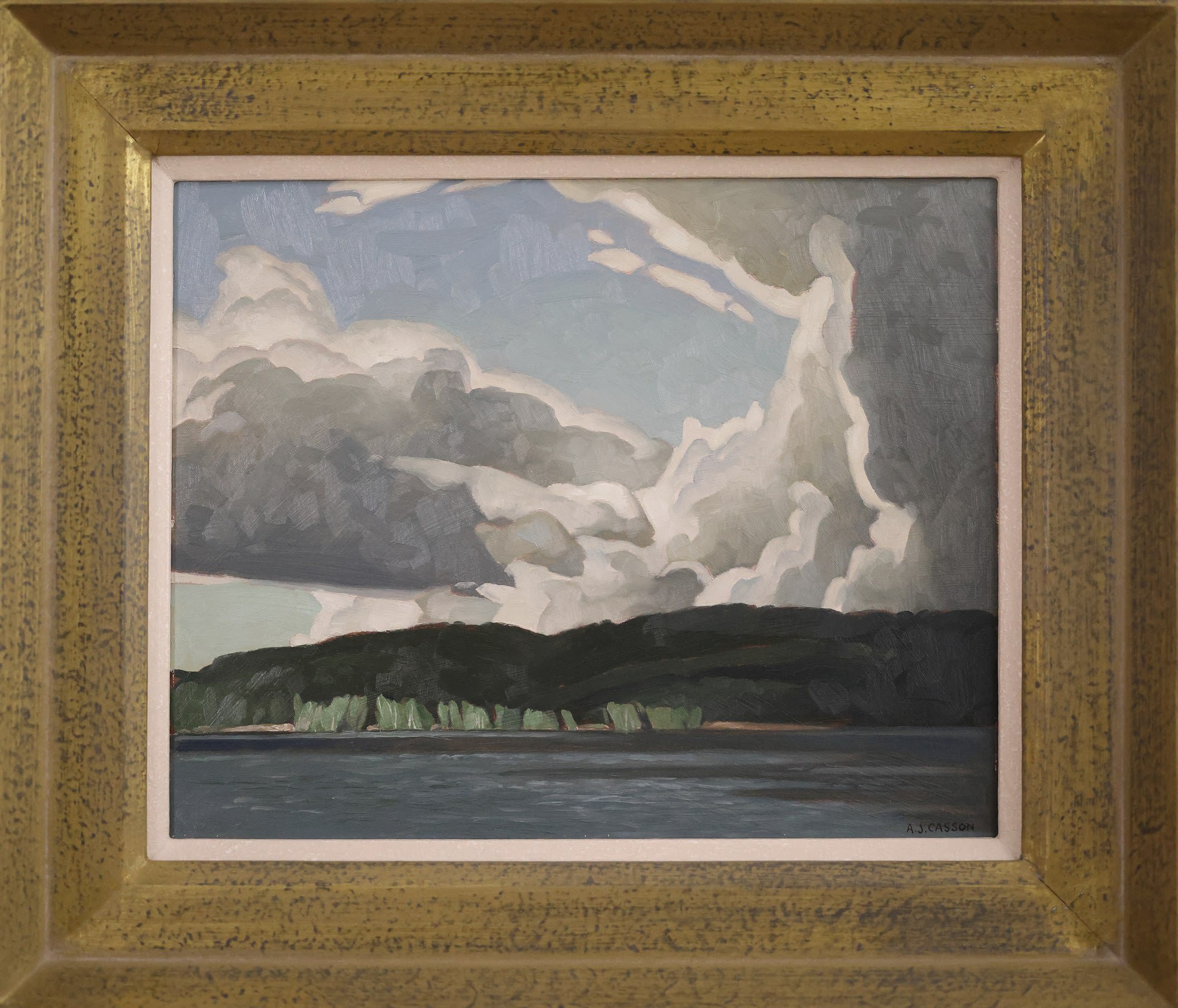
A.J. Casson; Storm Clouds, Algonquin Park, 1963
Casson’s artistic talent was recognized at an early age, for at the age of fourteen his teacher had him teach art lessons to his classmates because she recognized his talent surpassed her own. At age nineteen, Casson was first exhibited at the Canadian National Exhibition in 1917. After World War I, he was employed as a commercial artist and became close friends with Franklin Carmichael, who was a member of the Group of Seven.
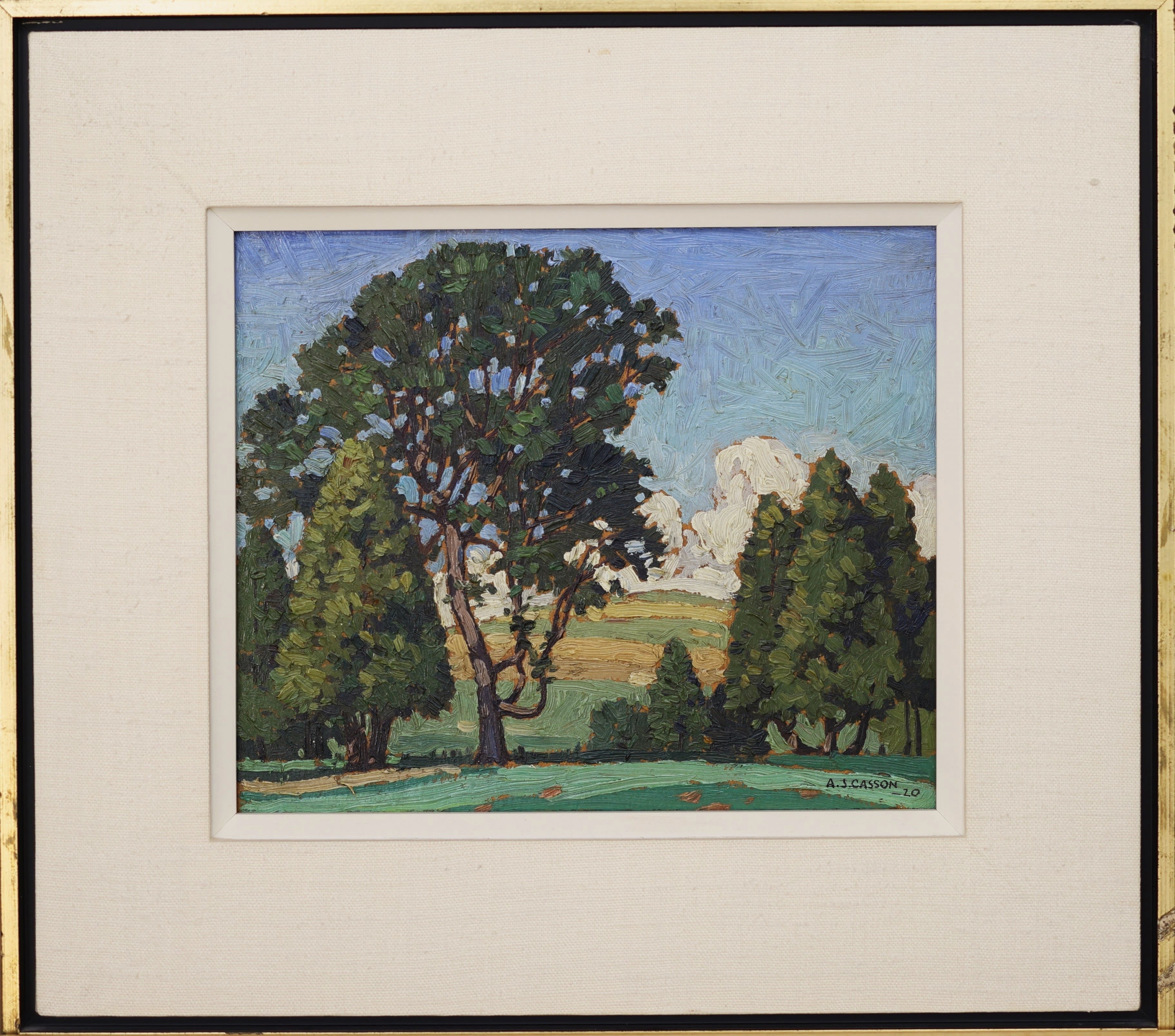
A.J. Casson; In the Don Valley, 1920
A.J. Casson was then employed by Sampson-Mathews, where he had a successful thirty-two year career, so the bulk of his artwork was produced on a part-time basis during his free hours. He enjoyed the outdoors and often went with Group of Seven members on sketching expeditions before being asked to become the youngest member of the Group in 1926.
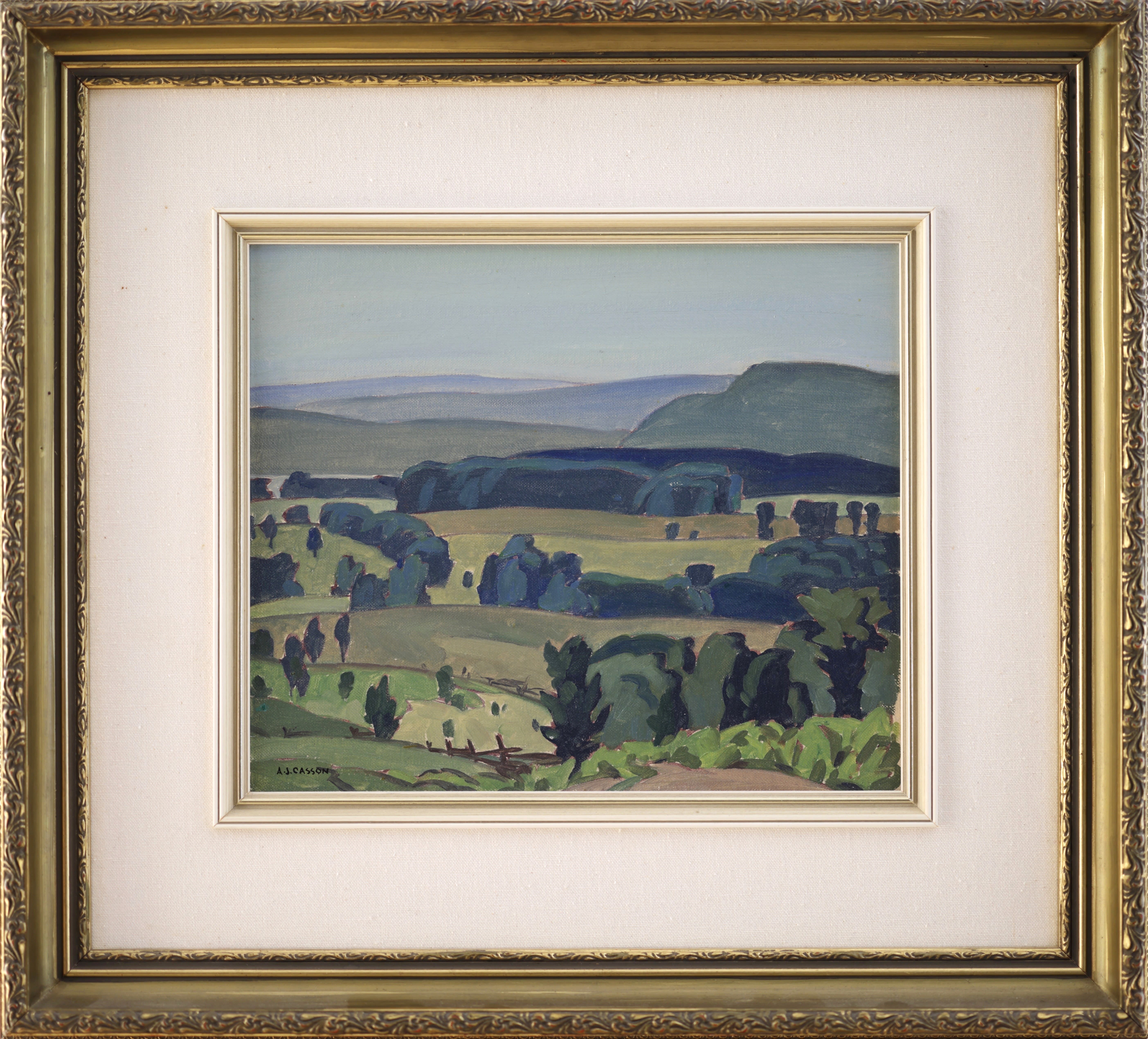
A.J. Casson; Haliburton, 1939
Casson modified his artistic style over the years, and upon retirement worked with the Ontario Provincial Police and dealers to uncover art forgeries. A.J. Casson was devoted to his family and received many honours for his long-lasting contributions to Canadian art, including having a township in Algoma named after him. He was married for over fifty years to his wife Margaret.
